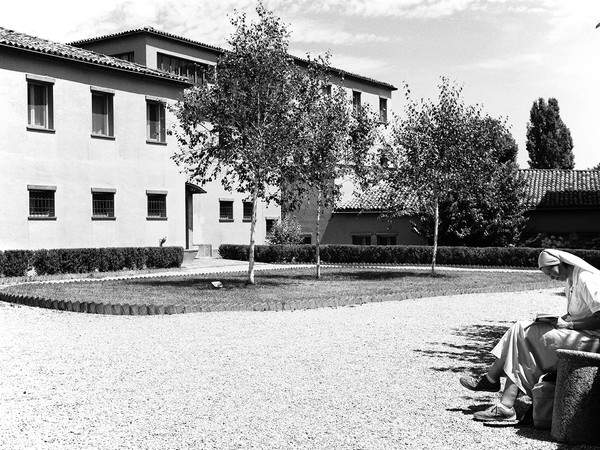A photographic journey to document two seemingly distant worlds, but in many ways very similar and complementary: that of cloistered nuns and that of female prisoners. All without any morbid curiosity or prejudice, but rather with great sensitivity and attention. Monasteries and prisons are therefore the focus of the exhibition Un mondo “dentro” - Clausura e carcere, which, from January 9 to 19, exhibits Eliana Gagliardoni’s photographs in Milan, at the Ancient Oratory of the Passion of the Basilica of Sant’Ambrogio.
For the realization of this project, which took more than four months of work, Eliana Gagliardoni photographed the cloistered nuns of three monasteries, two of the Benedictine order and one of the Carmelite order,to be precise the Monastery of St. Benedict in Via Bellotti, Milan, the Benedictine monastic community of the Viboldone Abbey, a hamlet of San Giuliano Milanese, and the Monastery of Santa Maria del Monte Carmelo in Concenedo, in the province of Lecco. Very few photographers have been allowed to enter a monastery to photograph the enclosure, and in this sense, Eliana Gagliardoni was perhaps the only one to have obtained this privilege thanks to the special concession made to her by the Episcopal Vicar of the Diocese of Milan. After receiving permission from the Ministry of Grace and Justice in Rome, Gagliardoni finally also entered the Bollate prison, inside which she portrayed women prisoners.
Thus, from the unprecedented juxtaposition of these two realities, the idea of giving life to “A World ’Inside’” was born. “Beyond high walls and windows with bars that the gaze cannot pass through,” Eliana Gagliardoni explains, “there are lives, hidden realities. These are lives that intrigue, sometimes arouse suspicion or generate prejudiced opinions. How many people, like me, have wondered about the meaning of a life as a recluse? Cloistered nuns and imprisoned women: the juxtaposition might seem a stretch, but the possibility of ’inner growth,’ although starting and progressing in very different and opposing contexts, turns out to be a great opportunity for both. These are two seemingly distinct and distant worlds, but invisibly connected by a powerful tool: Prayer. Cloistered nuns pray, not only for themselves, but also for those who ask for help and, in this sense, they pray especially for those who live a detention regime, often maintaining correspondence relationships with imprisoned men and women.”
Eliana Gagliardoni was granted the opportunity to get to know all these women, to step through the doors of their “worlds” and to share their experience for a few hours. Through this project, made possible thanks to the invaluable contribution, support and collaboration of Caritas Ambrosiana and Don Marco Recalcati, chaplain of Milan’s San Vittore prison, the photographer was able to get to know people of great spiritual stature and people who have made mistakes and are consciously paying for their mistakes. “One and the other,” she concludes, “welcomed me with kindness, benevolence and friendship, and to all of them, indistinctly, I reserve my gratitude.”
For the duration of the photo exhibition, both the works on display and box sets containing the most significant photographs will be on sale, interspersed with transparent tissue with phrases of high spiritual value written by the cloistered nuns, who participated and made their very personal contribution to the realization of the project. There is no lack of a solidarity aspect. At the end of the exhibition, in fact, the proceeds of this sale will be entirely donated to Don Marco Recalcati in favor of particularly needy inmates of the San Vittore prison and their families who, due to the imprisonment of their relative, are in conditions of severe hardship and difficulty.
Source: communiqué
 |
| Monasteries and prisons: similarities between these two worlds in Eliana Gagliardoni's photographs |
Warning: the translation into English of the original Italian article was created using automatic tools. We undertake to review all articles, but we do not guarantee the total absence of inaccuracies in the translation due to the program. You can find the original by clicking on the ITA button. If you find any mistake,please contact us.